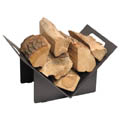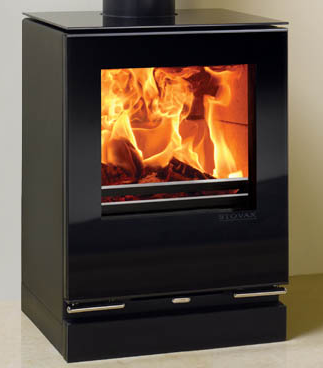If you care about your environmental footprint then you might not have considered a wood burning stove for your central heating.
On the face of it, electricity looks cleaner, then there’s gas to consider. But actually wood can be the most environmentally friendly choice. In fact, it can be totally carbon neutral.
The emissions are controlled
Of course there are emissions, but with today’s stoves and sophisticated chimneys, the emissions from the average stove are negligible. Most are fully certified to CE standards, which means they are compliant with strict Europe-wide legislation that limits their use. Wood burning stoves are also popular in countries like Sweden, Denmark and Norway.
These countries are blessed with massive amounts of woodland, but they are also fiercely protective of the environment. Britain is some way behind the Scandinavians when it comes to recycling and emissions. So although it is a leap of faith, it’s safe to assume that if it’s good enough for them, it is good enough for us.
Seasoned wood is better for the environment
 To reduce your emissions as much as possible, use properly seasoned wood that has been dried for at least two years, or force-dried in a kiln to remove the moisture. Ideally you want wood that has less than 20% moisture and if you can secure hardwood, it will offer an even cleaner burn.
To reduce your emissions as much as possible, use properly seasoned wood that has been dried for at least two years, or force-dried in a kiln to remove the moisture. Ideally you want wood that has less than 20% moisture and if you can secure hardwood, it will offer an even cleaner burn.
Alternatively, if the environment is at the forefront of your mind, opt for briquettes that are formed from compressed wood shavings. These are the powerhouses of the wood burning fuel world and they are made from waste wood, which is chipped and then reformed. They burn cleaner than logs, they produce more energy per kg and they will have the least environmental impact.
Wood is also a clearly renewable energy source; look outside and, unless you’re in the city, you’ll see some in its natural state. When a tree is harvested from cultivated forest or a local plantation, it is replaced by another tree and the cycle goes on. So as long as you get your wood from a local source, your wood burning stove should actually be more environmentally friendly than any other source of energy.
Go local for the best effect
It will go beyond that, too, if you support your local producer by buying locally sourced wood. This way you’re giving back to your community. So simply buying logs to heat your water will help keep a whole cultivated forest going and the amount of carbon dioxide and other noxious gases those trees will suck out of the air will more than offset any small emissions from your house.
Lastly, consider this: a wood burning stove is built to last. It’s a strong system that will outlast most electric boilers in this world. When you consider the environmental impact of disposing of just one boiler, the whole equation changes; the wood stove emerges as the clear winner – it becomes the greenest option by far.


